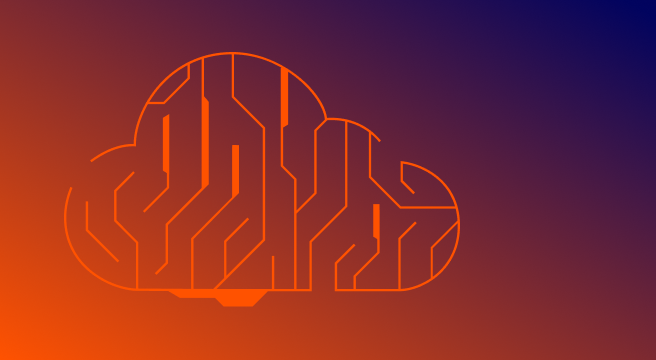Data security posture management (DSPM) in DevSecOps
Last updated | August 18, 2025 |
What is DSPM in DevSecOps?
Imagine a world where your DevSecOps teams can innovate at warp speed without putting sensitive data at risk. This guide reveals how data security posture management (DSPM) turns that vision into reality with actionable insights you need to discover, classify and secure data from the earliest stages of development.
How DSPM helps you shift-left on data risk
Modern DevOps teams move fast, shipping new features and services across multi-cloud environments at a breakneck pace.
But with that speed comes risk, especially when sensitive data enters the picture.
Data security posture management (DSPM) gives your DevSecOps teams the visibility and context they need to identify and fix data exposure risks early in the software development lifecycle (SDLC).
By integrating DSPM into cloud-native workflows, you can shift left on data protection, minimize blast radius and avoid costly security incidents.
Why data exposure happens in DevSecOps
Cloud-native development practices prioritize speed, automation and scale. Teams spin up new environments, services and integrations in minutes.
But without centralized visibility, sensitive data can end up in:
- Development or staging environments without proper security controls
- Shadow databases or storage buckets automation creates
- Code repositories or configuration files without encryption
- Test data that includes real production records
These issues often go undetected because traditional security tooling, including many vulnerability management platforms, lacks visibility into data itself. Instead, they primarily focus on infrastructure misconfigurations or network vulnerabilities.
But in cloud-native development, your sensitive data is just as dynamic as your infrastructure.
Without DSPM, your security teams can't keep pace with how quickly your organization creates, clones or shares new data sources across environments. It creates significant gaps in overall exposure management.
Many security tools catch misconfigurations late in the cycle or, worse, after deployment. DSPM changes that by embedding sensitive data discovery and data exposure risk analysis into development workflows.
Unlike cloud security posture management (CSPM) tools that focus on infrastructure risk, DSPM addresses data-layer risk, which shift-left pipelines can miss.
How DSPM supports shift-left security
A strong DSPM solution gives DevSecOps teams the tools to:
Discover sensitive data early
Automatically detect sensitive data types like credentials or source code in cloud storage, databases and SaaS platforms as your teams provision infrastructure.
DevSecOps benefit: Prevents sensitive data from inadvertent exposure in early development or staging environments by providing immediate visibility.
Classify and label data accurately
Map discovered data to regulatory categories or internal governance policies. Classify data by environment and ownership to ensure test environments aren't unintentionally exposing real records.
Classification can involve various techniques, including regular expressions for pattern-based data and natural language processing (NLP) for unstructured data and contextual understanding.
DevSecOps benefit: Ensures test environments do not expose real production records to reduce compliance risk and data leakage potential.
Scan for misconfigurations
Analyze cloud environments for cloud misconfigurations like public buckets, open ports, disabled encryption or excessive identity and access management (IAM) roles that could expose sensitive data.
DSPM complements traditional vulnerability management by ensuring your teams don’t overlook data-related misconfigurations, which is vital for holistic exposure management.
While CSPM broadly identifies infrastructure misconfigurations, DSPM specifically identifies misconfigurations that directly expose sensitive data.
DevSecOps benefit: Provides developers with early feedback on data exposure risks in their infrastructure definitions for pre-production remediation.
Model risk exposure paths
Visualize the relationships between sensitive data, infrastructure and identities to identify where a vulnerability, over-permissioned role or misconfigured resource could expose data to unauthorized users.
DevSecOps benefit: Allows DevSecOps teams to proactively address data and access toxic combinations to prioritize fixes based on data risk.
Guide secure remediation
Offer remediation steps tied to the SDLC, like:
Removing over-permissioned service accounts
Replacing production data in test environments
Encrypting storage automatically through infrastructure as code (IaC) modules
Auditing and removing stale or orphaned data sets left over from previous test runs or deprecated services to reduce unnecessary exposure risk
DevSecOps benefit: Accelerates secure application delivery by providing clear instructions and enabling automated correction of data-related issues.
Support repeatable security policies
Define policies once and apply them across projects using standardized remediation templates, CI/CD hooks or policy-as-code integrations.
DSPM also helps uncover shadow data created during testing and prototyping and supports least privilege enforcement in early-stage environments.
DevSecOps benefit: Fosters a security by design culture, ensuring you have embedded and automatically validated policies to reduce manual security reviews and bottlenecks.
Enhance existing security programs
By focusing on the data layer, DSPM provides crucial context that enriches vulnerability management and contributes directly to a comprehensive exposure management strategy.
DevSecOps benefit: Ensures a comprehensive understanding of all layers of risk.
Where DSPM fits in the CI/CD pipeline
You can also extend DSPM to work with GitOps workflows and policy-as-code engines like Open Policy Agent (OPA) to enforce data controls as code. It enables security gates that don’t slow developers down.
You can integrate DSPM capabilities into:
- IaC scanning tools to flag risks before deployment
- CI/CD workflows for pre-merge data classification or access analysis
- DevSecOps dashboards to monitor risk posture in real time
- Trackers to assign data risk remediations as part of sprint planning
DSPM benefits
Security teams get continuous visibility into where data lives, its exposures and how to prioritize based on real risk.
Engineering teams get actionable context earlier in the cycle to reduce the backlog of post-deployment fixes and accelerate secure delivery.
Compliance teams benefit from automated documentation of classification status, access controls and remediation activity to support audit readiness.
DevOps leadership can track trends in data exposure risk across teams, projects or business units, turning reactive response into proactive governance.
Using DSPM in DevSecOps lets your teams move fast without breaking data protection. It helps unify security, engineering and compliance with a shared view of data risk. That alignment is especially critical for regulated industries like healthcare or finance, where you must embed audit trails, data retention rules and risk reporting into daily workflows.
Tenable Cloud Security: Built for DevSecOps
Tenable Cloud Security delivers DSPM capabilities as part of its unified platform for exposure management. It extends beyond traditional vulnerability management by focusing specifically on actual data risk in dynamic cloud environments, so your DevSecOps teams can:
Discover and classify sensitive data in real time across cloud environments
Identify toxic combinations and risk paths tied to data
Integrate findings into CI/CD pipelines and ticketing systems
Enforce least-privilege access policies using CIEM
With Tenable, you can enforce shift-left security while supporting agility and scalability in the cloud.
Explore how Tenable Cloud Security supports DSPM in DevSecOps.
DSPM resources
DSPM products
Cybersecurity news you can use
- Tenable Cloud Security
- Tenable One

